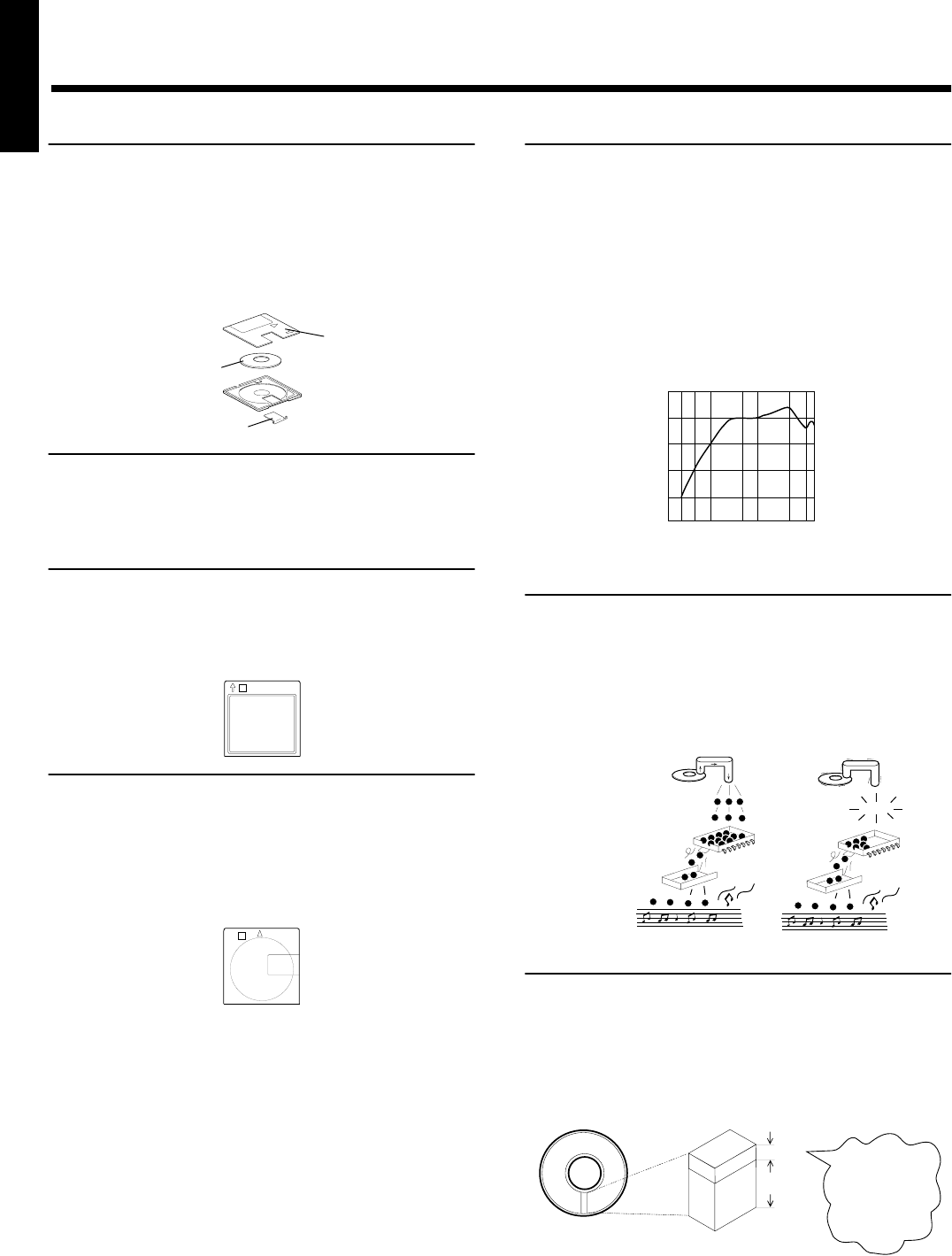
26
English
■■
Information on MDs (Minidiscs)
This is a new digital audio disc format: it has a diameter of 64 mm and enables up to 80 minutes of playback and recording.
The cartridge
The diameter of the disc itself is 64 mm, smaller than a CD single.
The disc sits inside a 68
✕
72 mm cartridge, which also being pocket
size, makes minidiscs extremely handy for carrying and storage.
Since the disc is protected by the cartridge, dust and dirt cannot eas-
ily get into it. And thanks to a shutter which is closed at all times
except during use, there is no need to worry about scratches or fin-
ger marks, making the handling of minidiscs very simple.
Two types of minidisc
There are two types of minidisc, “recordable MDs” and “playback-
only MDs.” The playback method for each is the same: a laser irra-
diates the disc and the signal is read from the beam which comes
back. However, the recording method for each type is different.
Playback-only MD
This is the type used for commercially-available pre-recorded MDs,
on which recording cannot be done. Like a CD, data is recorded
based on the presence or absence of small indentations called pits.
A disc recorded with this format is called an “optical disc.”
Recordable MDs
These are the so-called “blank” MDs you can use to make your own
recordings. Data is recorded by magnetism, which is easily proc-
essed, so that recording can be done again and again. By using a la-
ser to heat the disc, the magnetism is erased and the magnetic head
records the new data. Discs with this type of recording method are
called magneto-optical (MO) discs.
ATRAC (Adaptive Transform Acous-
tic Coding)
Within recordings, there are sounds which cannot be readily heard.
For example, as the volume decreases, high-pitched sounds and
low-pitched sounds become difficult to hear. Also, if a quiet sound
comes at the same time as or just after a loud sound, it will not be
heard. With minidiscs, data is compressed using a technology called
ATRAC (Adaptive Transform Acoustic Coding) which selectively
chooses sounds based on human sense of hearing characteristics.
With this technology, the recorded data is about one-fifth the vol-
ume of the original data, allowing it to fit on a compact minidisc.
Sound skip guard memory
With the minidisc, the data of the track being played can be tempo-
rarily stored up using a function called “sound skip guard memory”.
Even when data cannot be collected properly from the disc due to
shaking or vibrations, information is stored in the “sound skip guard
memory”, so that there is no break in the sound which is actually de-
livered.
UTOC (User Table Of Contents)
In a minidisc, apart from the recorded tracks, there is the “UTOC”.
In this area, information such as the position where each track is re-
corded, the track divisions, and track order are listed. When music
search is done, the UTOC is consulted, and the tracks are quickly
found and played back. When editing is done, only the UTOC is
changed, so there is no need to re-record the tracks.
Cartridge
Disc
Shutter
SOUND
0
+20
-20
-40
-60
(dB)
20 50 100 500 1k
5k 15k10k
(Hz)
Low
|
Sound range
\
High
Sound range and sensitivity of our ears
Sharp
»
Sensitivity
of our ears
«
Dull
Optical pickup
Sound jump
guard menory
During normal play When vibration has occurred
STOP
UTOC
Track details
Contents
1. Track A: Page 9
2. Track B: Page 6
3. Track C: Page 10
÷
÷
÷


















